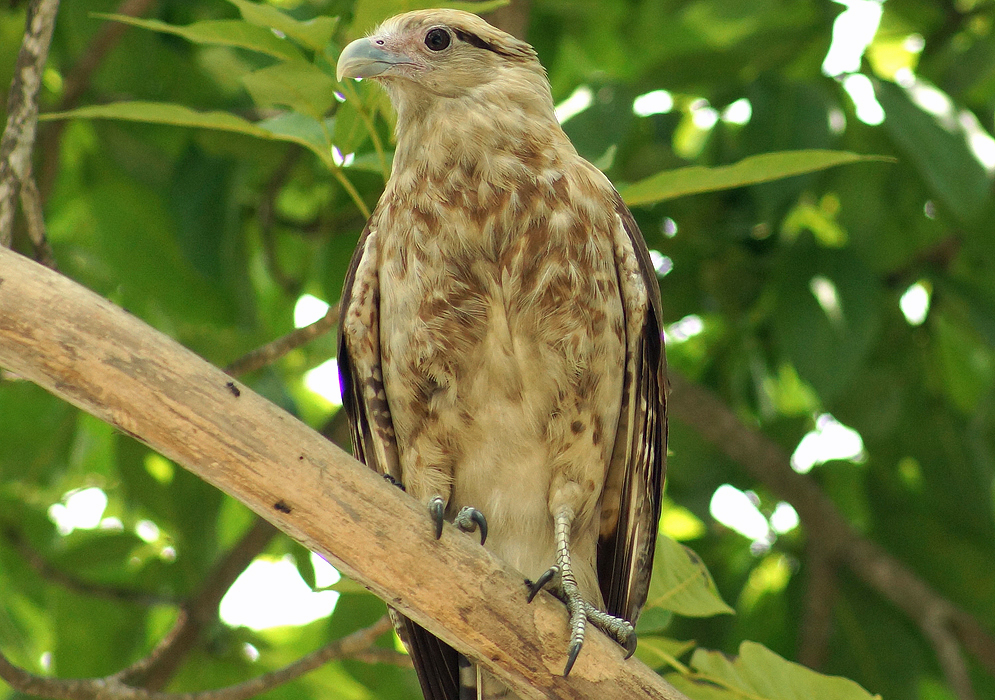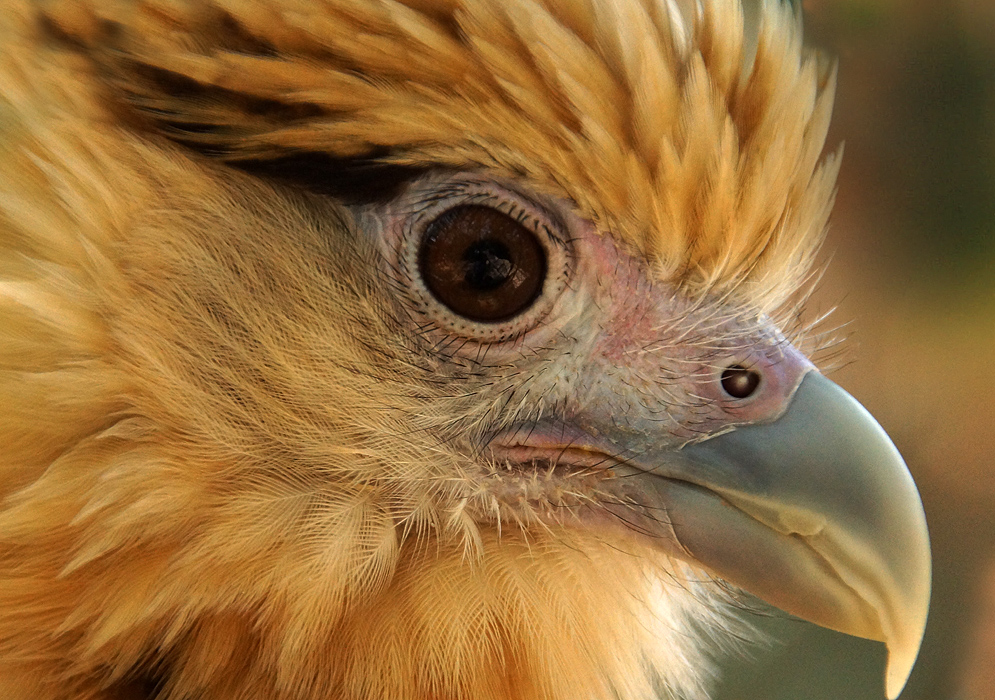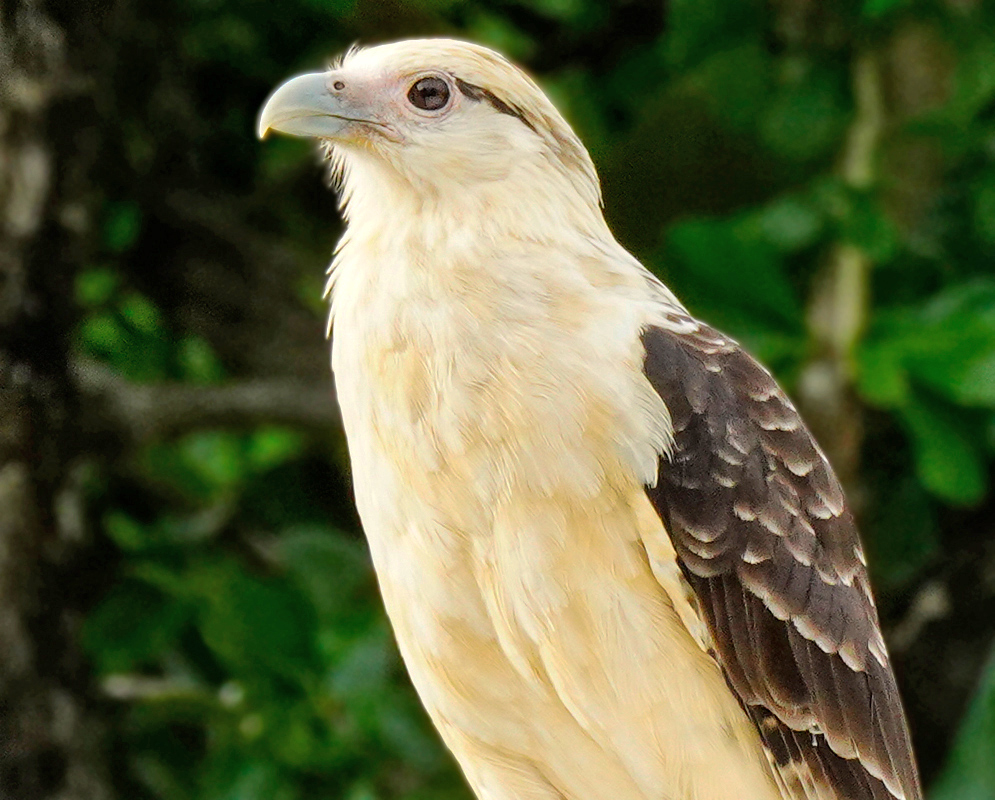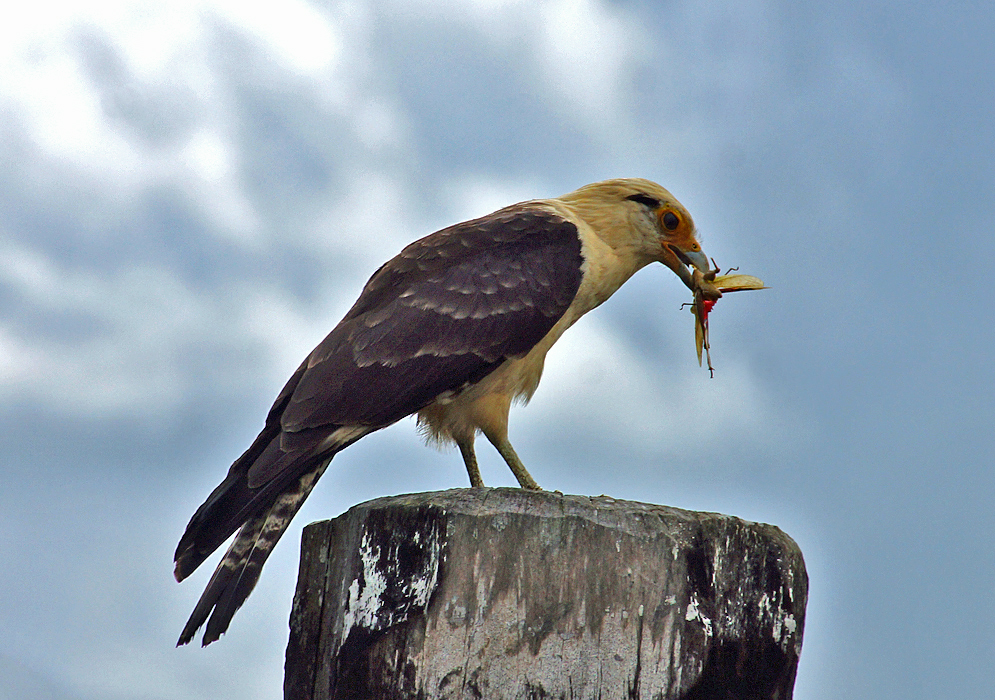This post has 11 Simple Fields-fields attached. Show fields.

The Yellow-headed Caracara, is a bird of prey belonging to the Falconidae family, which includes falcons and caracaras. This species is found across a broad range in both Central and South America except Chile. The Yellow-headed Caracara is a medium-sized bird, measuring about 16 to 18 inches in length and weighing on average 11.5 ounces. The females of this species are typically larger than the males, weighing between 11 to 13 ounces compared to the male's weight range of approximately 9.9 to 11.6 ounces. Adults have buff heads with a black streak behind the eye, and buff underparts. Their upper plumage is brown with pale patches on the flight feathers of the wings, while the tail is barred cream and brown. The immature birds have denser brown mottling on their head and underparts. Unlike other falcons in its family, the Yellow-headed Caracara is not a fast-flying aerial hunter but is rather more sluggish in its movements and often scavenges for food. This omnivorous bird's diet is varied and includes carrion, insects, crabs, fish, reptiles, amphibians, mammals, bird eggs and nestlings, horse dung, fruits like those of oil palm, coconut, maize, and seeds. It is known to take ticks from cattle and other large mammals, enlarging open wounds to feed. This caracara forages both on the ground and in the air and has even been observed foraging for small invertebrates in the fur of brown-throated three-toed sloths. It is not generally regarded as a threat by mixed-species feeding flocks, which do not make alarm calls during encounters with it. The Yellow-headed Caracara is typically found in lightly-treed open landscapes such as savannas with palms and scattered trees, ranchlands and pastures, gallery forests, and the edges of denser forests. It is usually seen at elevations from sea level to about 3,300 feet, but has been recorded at much higher elevations. This species is generally sedentary, and adapts well to human-modified landscapes and can colonize cleared areas. The Yellow-headed Caracara is currently classified as 'Least Concern' on the IUCN Red List. The global population is estimated to number between 5 to 50 million mature individuals, and the species is experiencing a population increase. Photographed in Barranquilla, Colombia.







